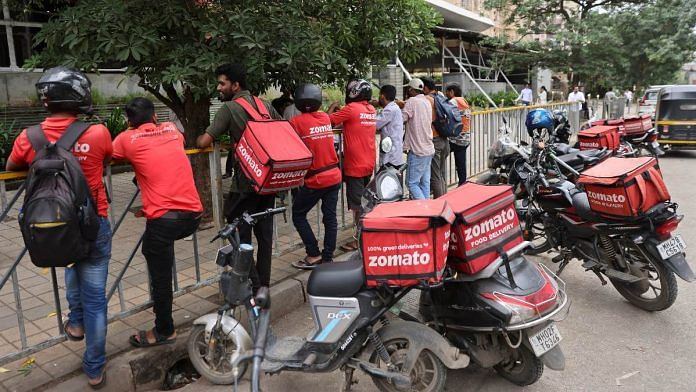The imminent Delhi Motor Vehicle Aggregator and Delivery Service Provider Scheme 2023 should be notified soon. Published in May for consultation, this scheme capitalises on the surging consumer appetite for digital intermediaries, including taxi and delivery apps. At its core, it champions the electrification of taxi and delivery fleets, projecting that all new vehicles under these apps will transition within four to five years after the scheme gets notified. Additionally, it mandates digital intermediaries to ensure safety and environmental compliance by gig workers.
The Delhi government first mooted the scheme as a draft in 2022 using the authority that the Motor Vehicles Act 1988 grants to state governments. The slightly liberalised 2023 version requires digital intermediaries with 25 or more vehicles to electrify their transport modes entirely by April 2030. To meet this goal, the scheme outlines a phased transition to electric vehicle (EV) fleets across two-wheeler, three-wheeler, and four-wheeler delivery segments within the next five years. On 28 September, the Delhi Transport Department sent the policy to the cabinet for approval, and it now awaits the Lieutenant Governor’s assent.
However, the Delhi Government’s approach is fraught with challenges. By disproportionately burdening intermediaries and gig workers with responsibilities, the scheme seems to sidestep the State’s own duty.
Also read: India’s gig workers need urgent social security. But Gehlot’s new law isn’t the answer
Penalising intermediaries & gig workers
Most delivery businesses function on a hub-spoke system and do not directly manage the fleet that delivers goods to our doorsteps. Delivery drivers, primarily gig workers, leverage digital intermediaries for flexible employment opportunities. It is unclear why the scheme expects these intermediaries to shoulder responsibilities like procuring Pollution Control Board certificates or settling parking fines on behalf of gig workers.
The digital market thrives due to these intermediaries. After all, isn’t the internet essentially a vast intermediation network? Instead of burdening them with enforcement of State policy, we should be leveraging these platforms for their inherent market efficiencies. Fitting responsibilities onto digital players by force not only misaligns core competencies but also hinders scope for more collaborative progress.
While the scheme’s enthusiasm for swift EV adoption seems commendable, it serves to sidestep the State’s duty to bolster India’s nascent EV infrastructure. Delhi, among the leading territories in EV infrastructure in India, grapples with a stark deficit, boasting only 1,919 charging stations, 2,452 charging points, and 232 battery-swapping stations. At the same time, the city has an estimated 55,000 to 65,000 food and grocery delivery riders alone.
Reflect on this: A typical two-wheeler EV in India demands between four to five hours for a full charge. Yet, delivery workers traverse 90-100 kilometres daily, with electric two-wheelers averaging just 84 km per charge. Why must blue-collar workers consistently grapple with abrupt policy shifts without adequate government support? Remember the serpentine queues of auto rickshaws during the compressed natural gas transition (CNG), a phase marred by insufficient infrastructure readiness? It has taken 20 years for Delhi’s CNG supply chains to reach a point when such queues have reduced.
Delhi Government’s approach is fraught with challenges. By disproportionately burdening intermediaries and gig workers with responsibilities, the scheme seems to sidestep the State’s own duty.
Don’t penalise, but incentivise
Both Norway and China lead the pack in EV adoption globally. The Norwegian government’s generous incentives have played a pivotal role in its EV success. The shift to EVs gained momentum in 2012 when the total cost of owning one fell below than that of traditional fuel vehicles. These strong incentives persisted until 2022, tapering off as EV adoption increased. Today, Norway offers the world’s densest public fast-charging infrastructure and showers EV buyers with benefits like free municipal parking, toll discounts, and bus lane access.
Meanwhile, China, as the world’s top EV producer, offered significant EV ownership incentives until 2022, coinciding with the time when EVs became more cost-effective than Internal Combustion Engine Vehicles. With 760,000 public fast-charging points and 1 million public slow-charging points, China outpaces the rest of the world in this sector.
Both nations scaled back their EV subsidies only after surpassing the total cost of ownership threshold. This ensured that individuals and organisations making the switch didn’t shoulder the transition’s financial burden.
In this context, Delhi’s EV push should focus on the long-term benefits of incentivisation over penalisation of intermediaries and gig workers. This could include ideas like tiered and preferential access to charging infrastructure, designated parking spots, and a waiver of road tax. Digital intermediaries, with their extensive ridership data and on-ground insights, can play a pivotal role in this incentive-driven framework. They can provide valuable data to the government to help optimise charging infrastructure locations, predict peak usage times etc. A calibrated transition is important given that the lifecycle environmental benefits of EVs have not yet reached a definitive tipping point.
Moreover, as we navigate the complexities of transitioning to a more sustainable future, it’s crucial to triage our policy goals effectively. Two-wheelers, predominantly used by gig workers, form the backbone of our urban delivery infrastructure. Given their widespread use and the financial constraints of their primary users, they should be at the forefront of our incentivisation efforts. A holistic rethink will ensure that the transition is not only environmentally impactful but also socially equitable and economically viable.
The authors are associated with Koan Advisory Group, New Delhi. Their views are personal.
This article is part of ThePrint-Koan Advisory series that analyses emerging policies, laws and regulations in India’s technology sector. Read all the articles here.
(Edited by Humra Laeeq)



